Introduction
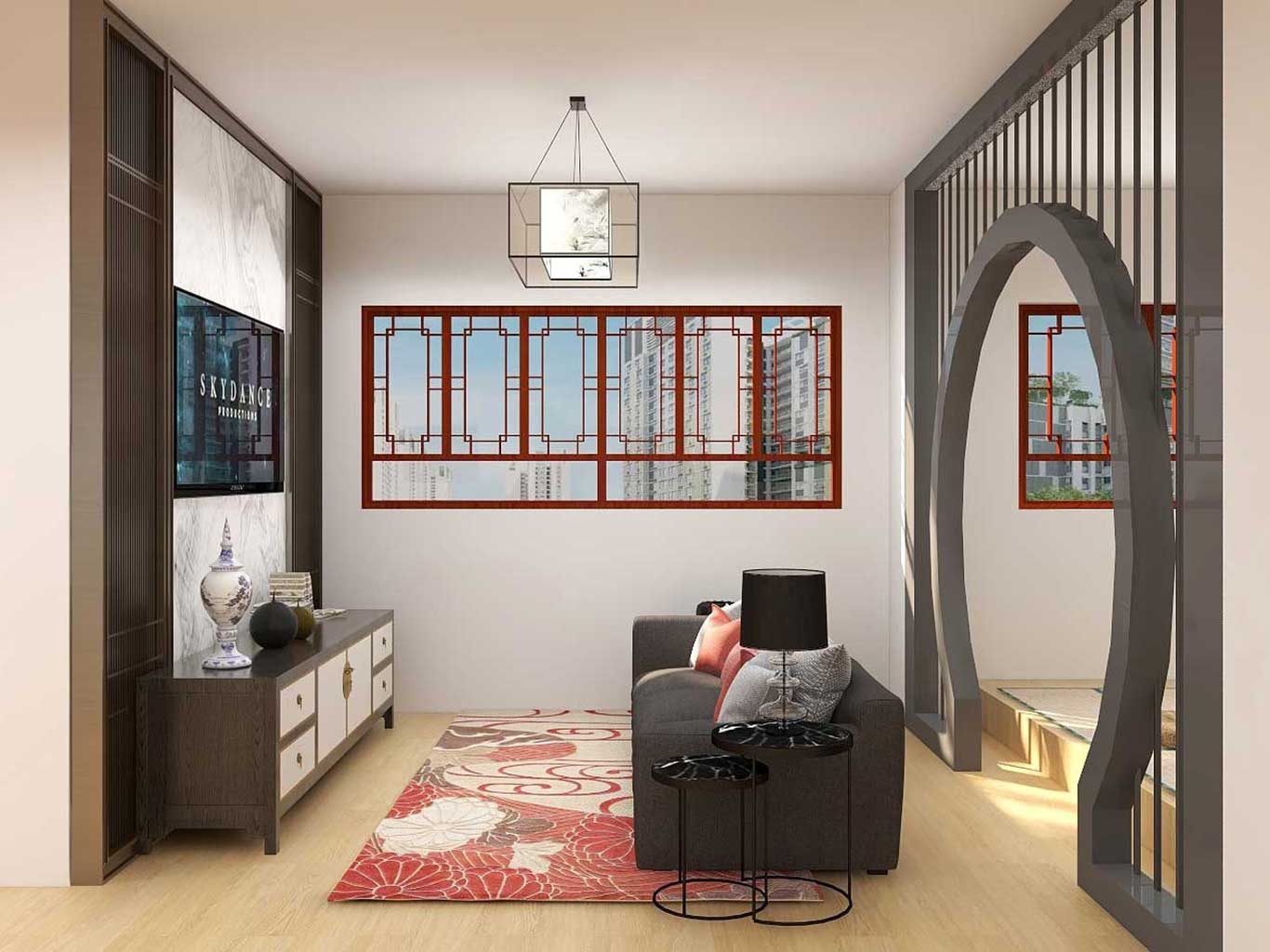
Oriental Chinese design is about achieving harmony in the home. This zen-like atmosphere calms the mind and sparks joy.
Today’s Oriental Chinese homes balance ancient traditions with modern design. They contain elements that appeal to both young and old.
In this article, we’ll share how this design originated, why it’s popular, and what its key features are. We’ll also share some pointers for feng shui. Finally, we’ll show how to apply this design to your home.
Origins of Oriental Chinese design
Oriental is derived from the word Orient, which is a term for the East (in relation to Europe). It’s mostly associated with the continent of Asia.
Oriental Chinese design has its roots in ancient Chinese culture. It dates back as far as 1,000 BC. Various elements of Chinese culture gave birth to a design ideology that promotes harmony and balance.
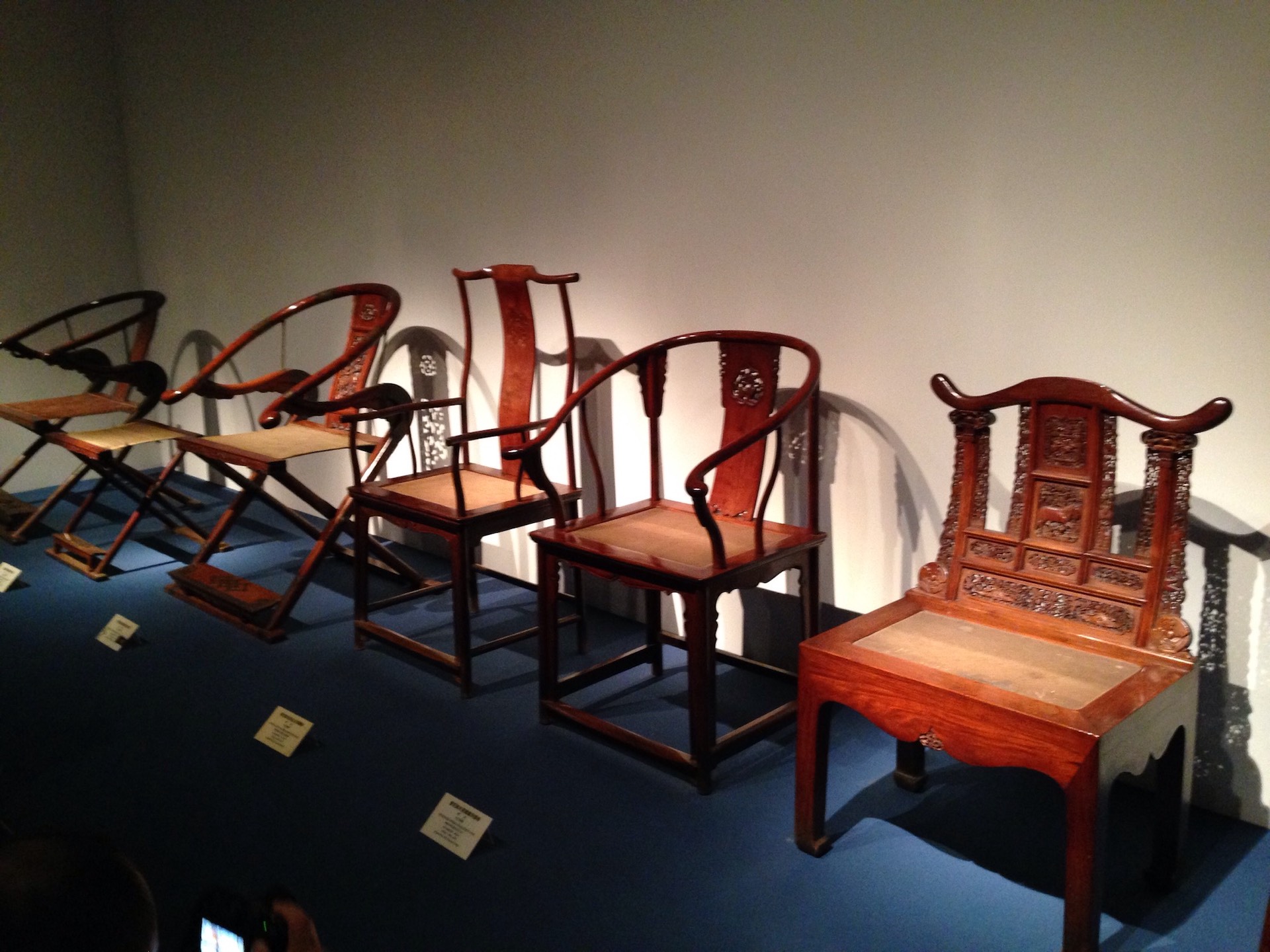
During the Ming Dynasty, from the late 12th to the mid 17th century, several innovations became staples in Chinese interiors. And they remained staples for years to come. For example, porcelain and lacquer have been widely used in furniture and decor since then.
Why people like Oriental Chinese
Due to its rich heritage from Chinese history and culture, the design appeals to an extensive audience. For Chinese families, it helps them connect to their roots.
In today’s stressful city environment, the Oriental Chinese design is a popular choice as a tranquil abode. It provides a calm and relaxing home for families to retreat to after work.
Characteristics
Oriental Chinese design is characterized by highly elaborate decoration and materials. Combined with opulent colors such as red and gold, the overall effect is timeless elegance.
Take a look at how this is achieved.
Red tones
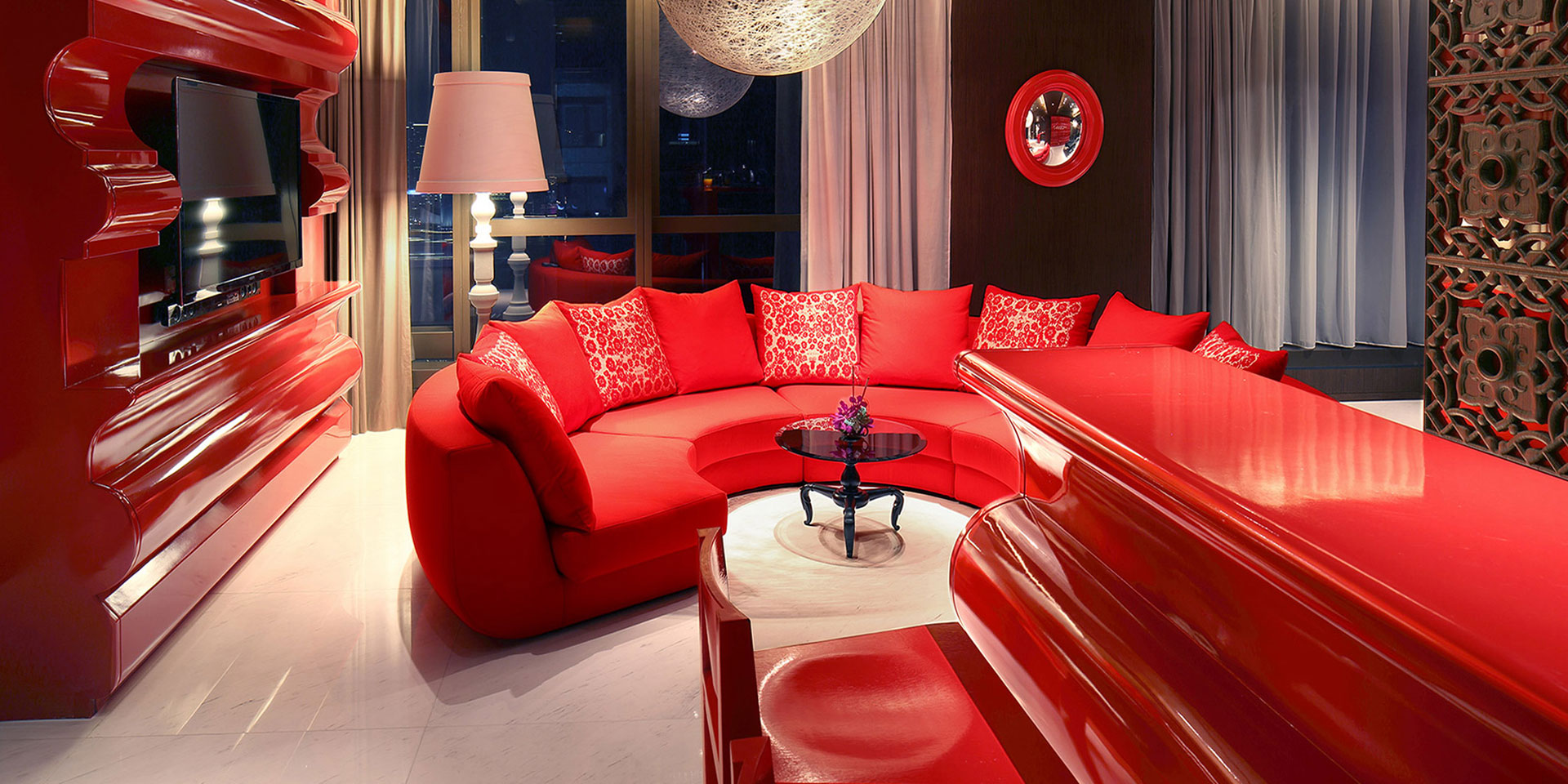
Red is a color synonymous with Chinese culture. It symbolizes happiness, success, and good fortune. The color is widely used during festivals such as Chinese New Year and important events such as weddings.
In Oriental Chinese homes, red is also the color of choice for many elements. Red is a common color for the wall. Furniture such as the sofa can also be in red. Even decorative pieces can be in red.

The extent to which red is used largely depends on the homeowner. Some people like plenty of red, while others prefer using it as an accent color for certain elements in the room.
Modern adaptations of Oriental Chinese style have largely shifted away from using red as the primary color. Where used, red stands out in the room. For example, bright red cushions on black sofas provide that impactful contrast.
Gold is another color that is common in Oriental Chinese design. It’s often used as the color for decorative designs against a red or black background.
Bamboo
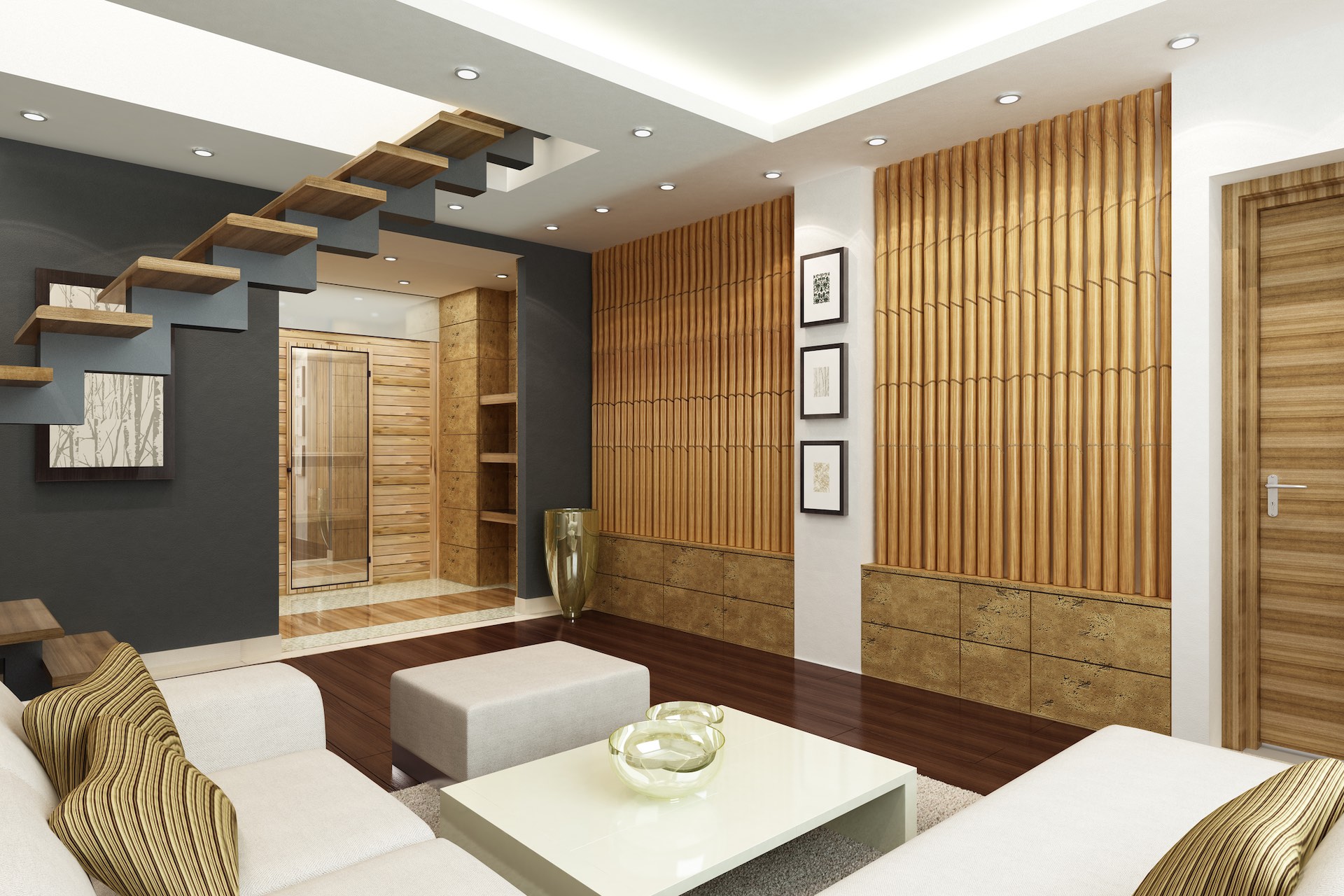
Originating from China, the history of bamboo spans thousands of years.
Bamboo is a versatile material. In the past, uses for the material included food, clothes, construction, music, weapons, etc.
In modern homes, bamboo is no longer used to build the structure of the building. Instead, designers use bamboo as decorative pieces.
Functionally, bamboo can be used to create a wall feature or a partition between spaces. It can also be depicted in images to be displayed on paintings or wallpapers.
Latticework
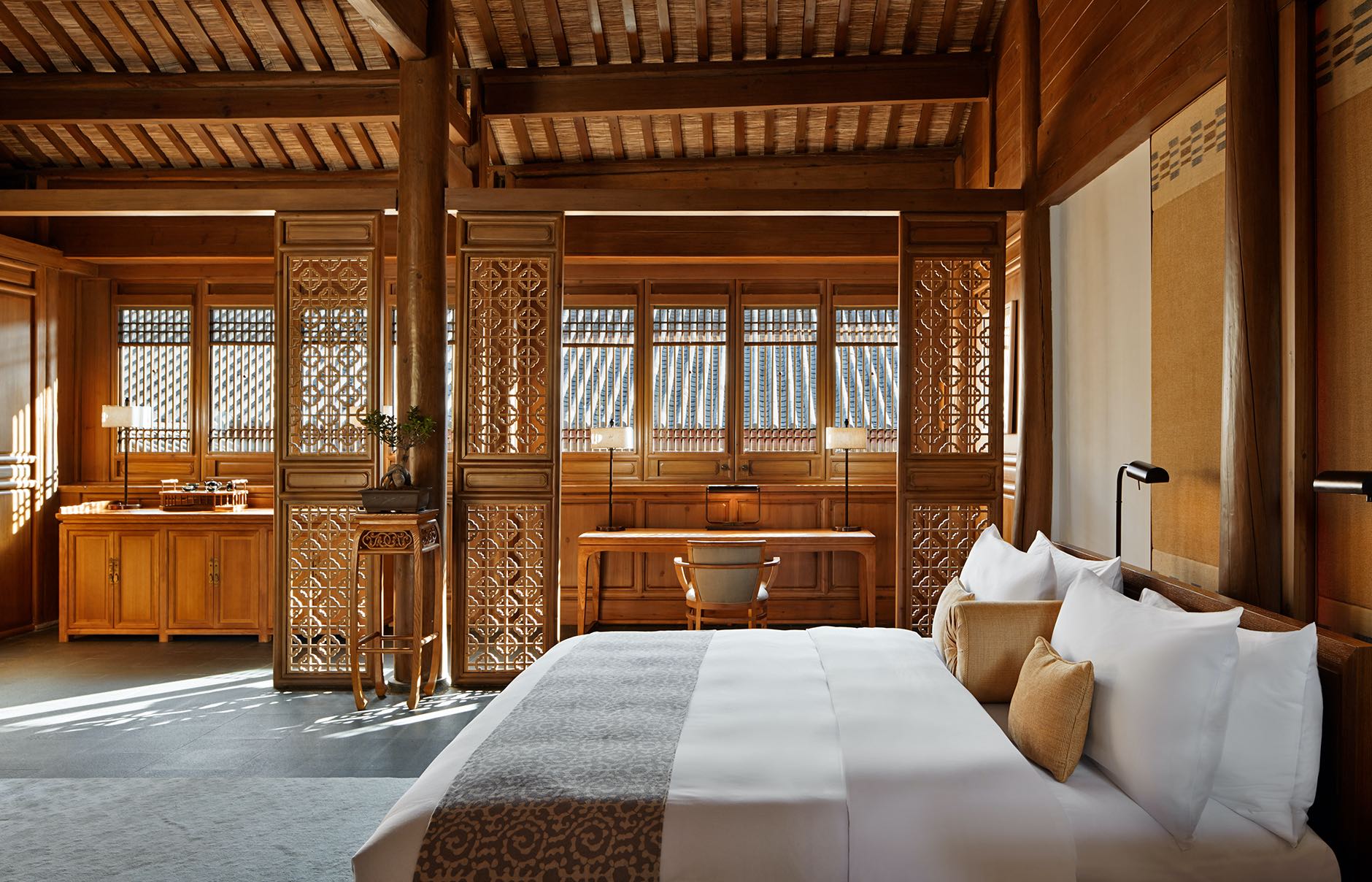
Latticework is the crisscrossing of materials to create a pattern. In Oriental Chinese design, wood is usually the material of choice. Modern adaptations may use other materials instead.
Besides bamboo, latticework is also used to create wall features or partitions. It's useful in allowing lights to filter through its open-work patterns to the indoor space.
Porcelain vases
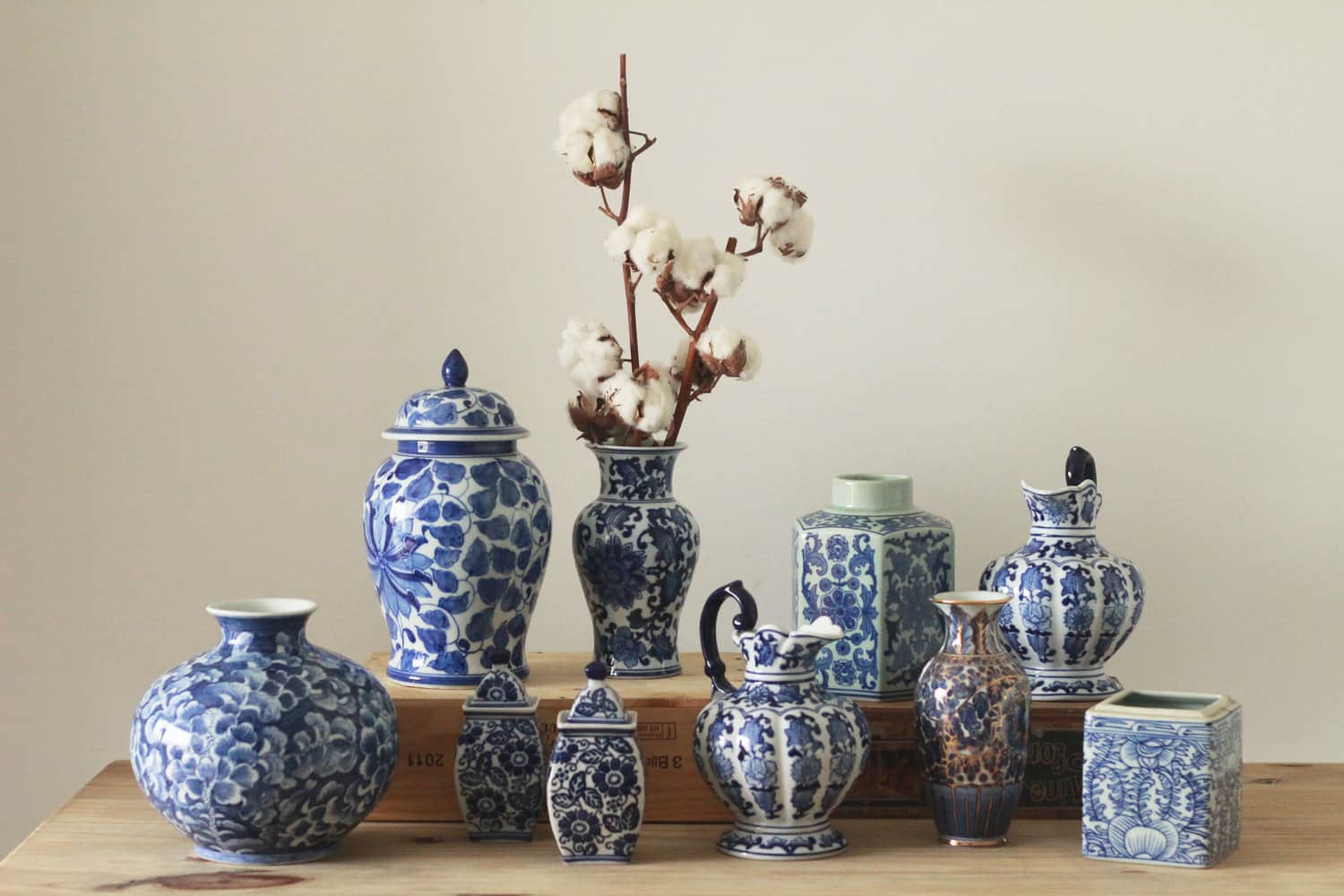
Porcelain originated from an ancient technique of making pottery. In Chinese history, porcelain was used for many purposes. The most common was for making vases. Porcelain was also used to make dinnerware such as plates, bowls, jugs, and decor.
The typical Chinese porcelain is white with blue patterns. In today’s homes, vases with these colors are used as decorative pieces. Flowers are included to complete the look.
Lacquerware
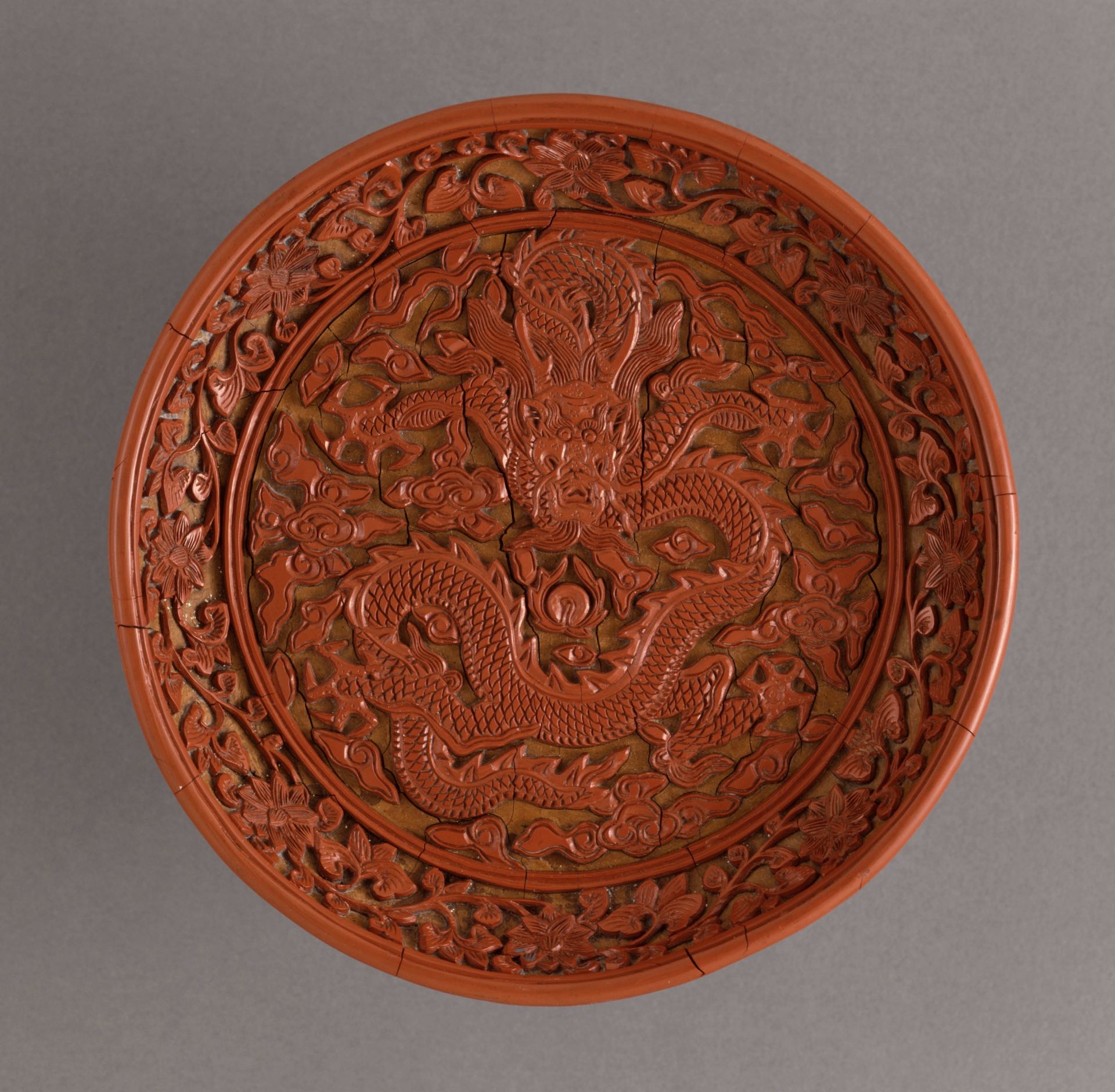
The technique of coating materials with lacquer dates back thousands of years. It’s widely used as it’s waterproof, corrosion-resistant, and high temperature-resistant.
Lacquer-coated surfaces have a beautiful finish. Thus, they could also be used to coat decorative pieces in homes.
Lacquer persists till this day because of it’s durable and beautiful properties. It's used to coat boxes, jewelry, vases, jugs, etc. Most Oriental Chinese homes would have a few pieces of lacquerware displayed.
Water features
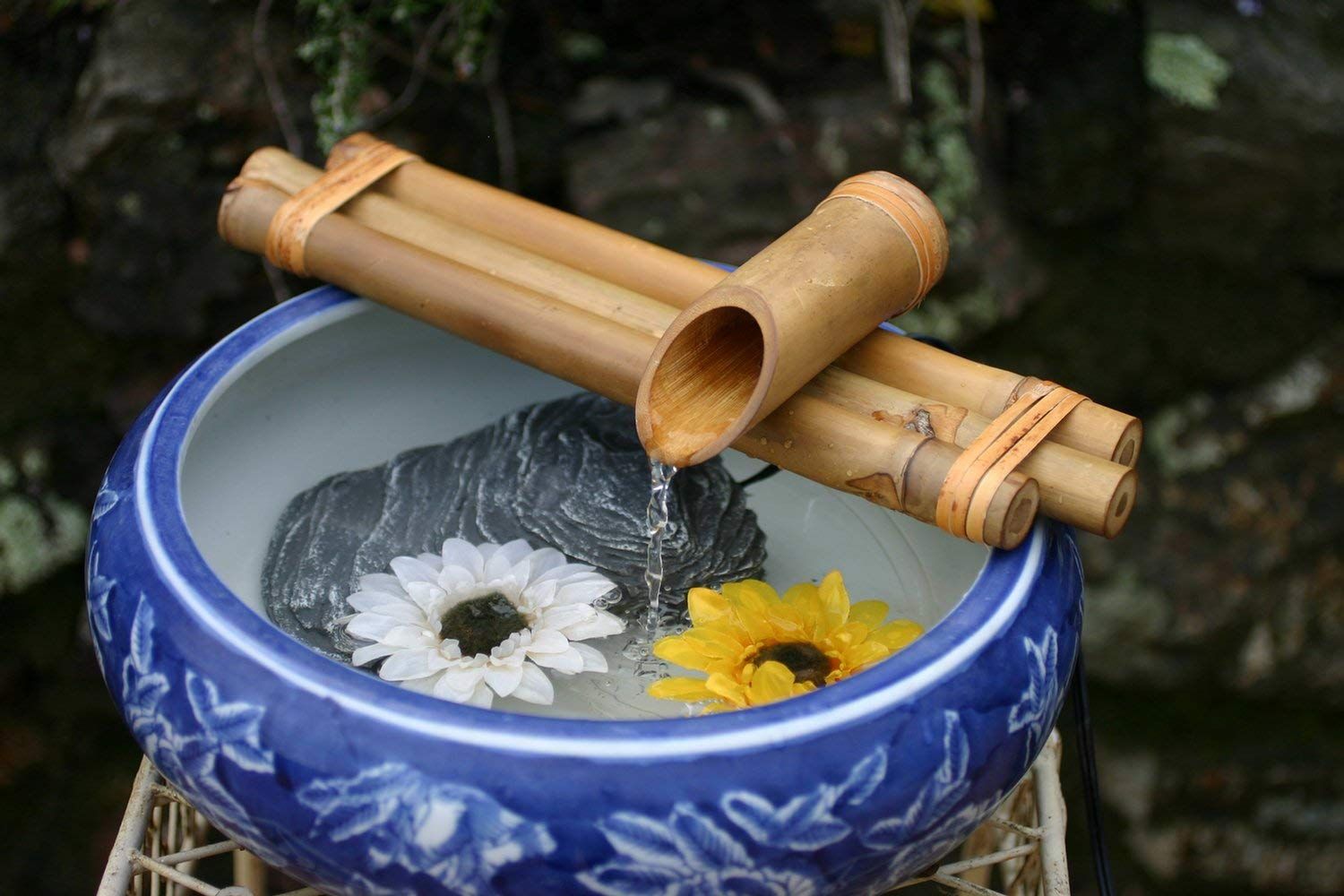
Due to feng shui, water features are common in many homes with Oriental Chinese styles. They can be found both indoors and outdoors. Various sizes are used depending on where the water feature is placed.
Nature is usually incorporated into the design of the fountain. Bamboo or small plants are common ways to show a connection with nature.
Jade statues
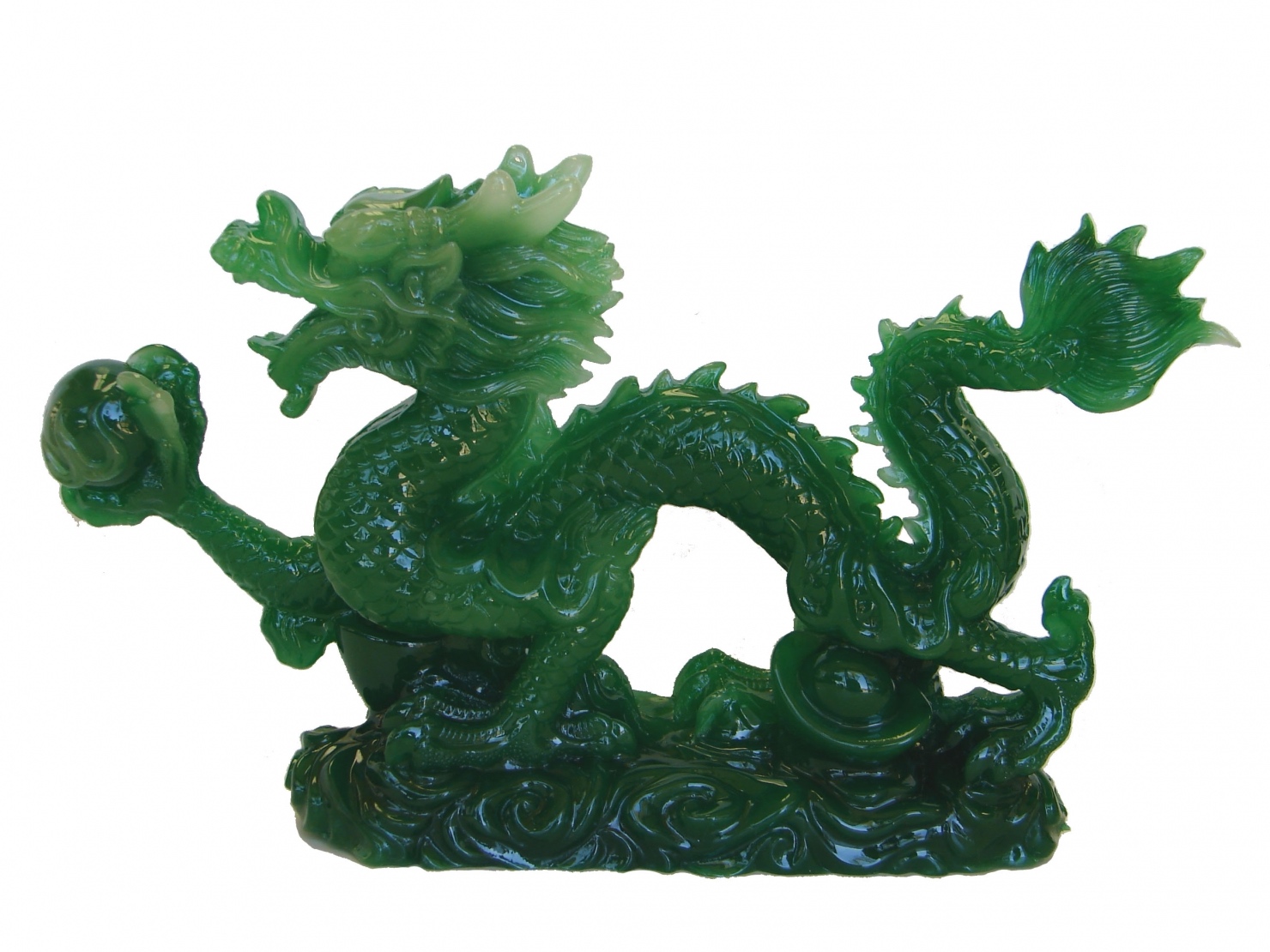
Jade is a mined mineral that is commonly used to create beautiful works of art.
In Chinese history, jade is highly significant. Its importance is comparable to gold and diamonds in the West.
Today, jade is used to create jewelry and ornaments. In interior design, these ornaments come in the form of mythical Chinese beasts such as dragons, or religious figures such as the laughing Buddha.
Lanterns
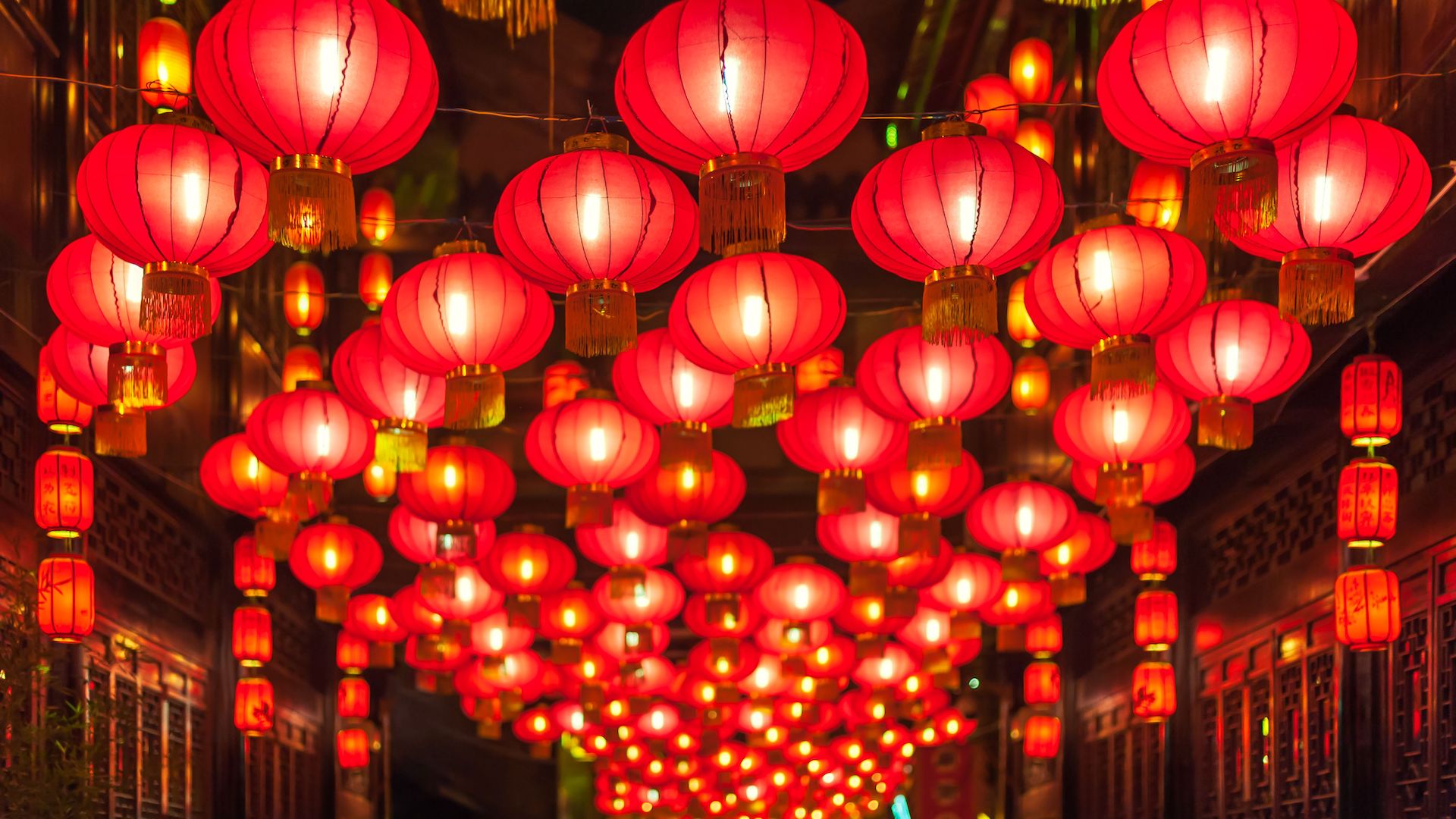
Lanterns are a distinct part of Chinese culture. They were the primary source of light in ancient temples and palaces.
In interior design, designers create unique light fixtures that are inspired by traditional lanterns.
These lights typically function as ambient lighting in the home. They're also aesthetically pleasing.
Handcrafted wooden furniture
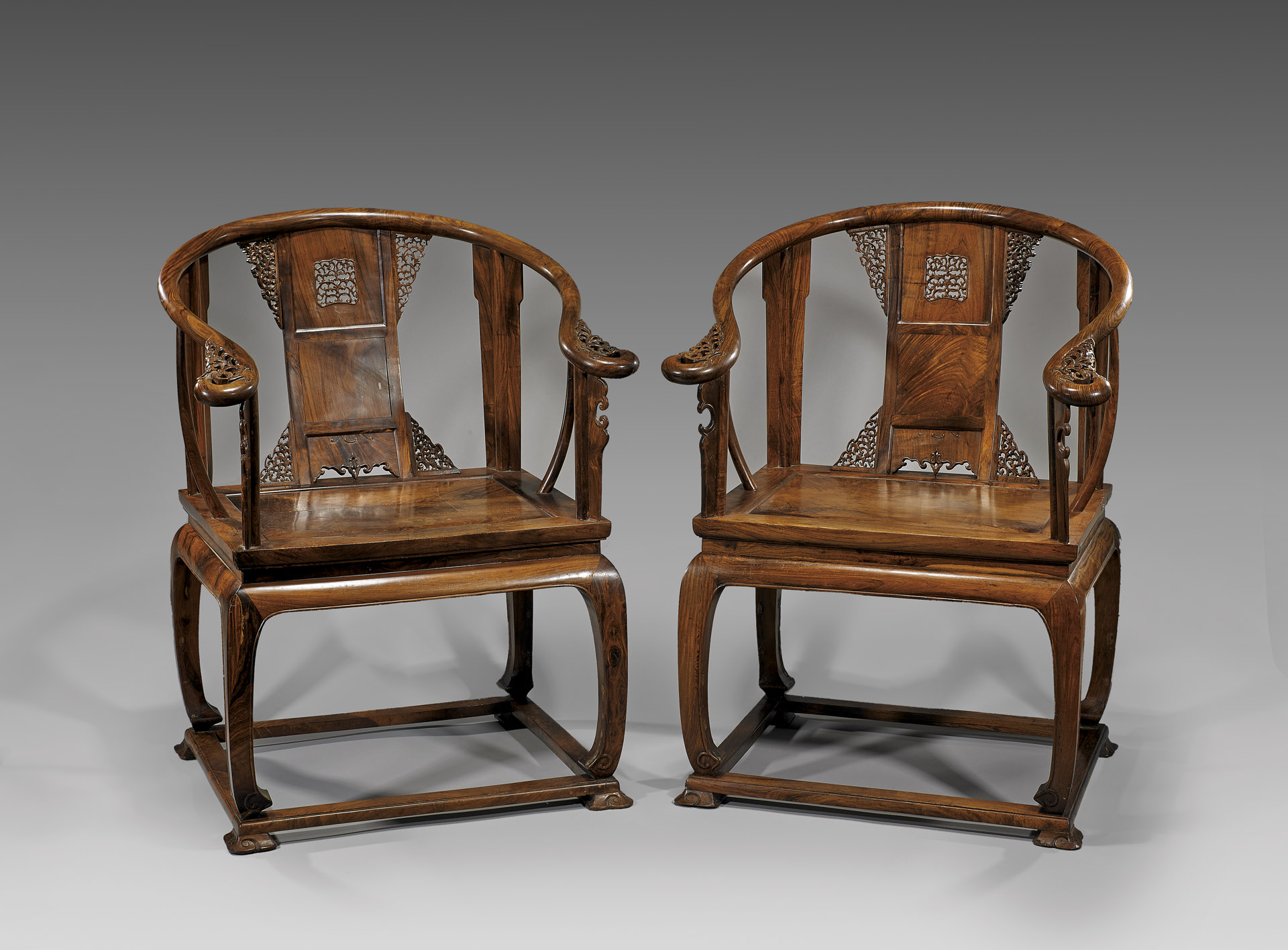
Many of today’s Oriental Chinese furniture designs originated from the Ming and Qing Dynasties. The furniture was individually handcrafted, with wood being the sole material.
Designers incorporated straight and curved lines, and latticework into the furniture. No nails were used in joining pieces of wood together, only cleverly designed joints. Lacquer was used to coat the furniture and protect them from wear and tear.
These are some of the characteristics of Chinese furniture that are still applied today.
Feng shui
Feng shui can serve as a guide to achieve harmony in a space. Believers of feng shui follow its principles when placing furniture and other objects in the home.
Feng shui is guided by the philosophy that the five elements — earth, metal, water, wood, fire play a part in the design. Feng shui also aims to balance yin and yang, and enhance the flow of energy points.
Generally, each element ties with a specific area of the house. Feng shui works to balance them for a better quality of life.
For example, one of the guiding principles in feng shui is to minimize clutter. Clutter symbolizes unfinished work that would stand in the way of onward progress. This is especially important for the entry-way because it denotes bad energy entering the home.
The level of expertise required in applying feng shui to the home can vary greatly. Thus, the final Oriental Chinese style adopted depends on the homeowners’ individual beliefs.
Applying Oriental Chinese to your home
Living room
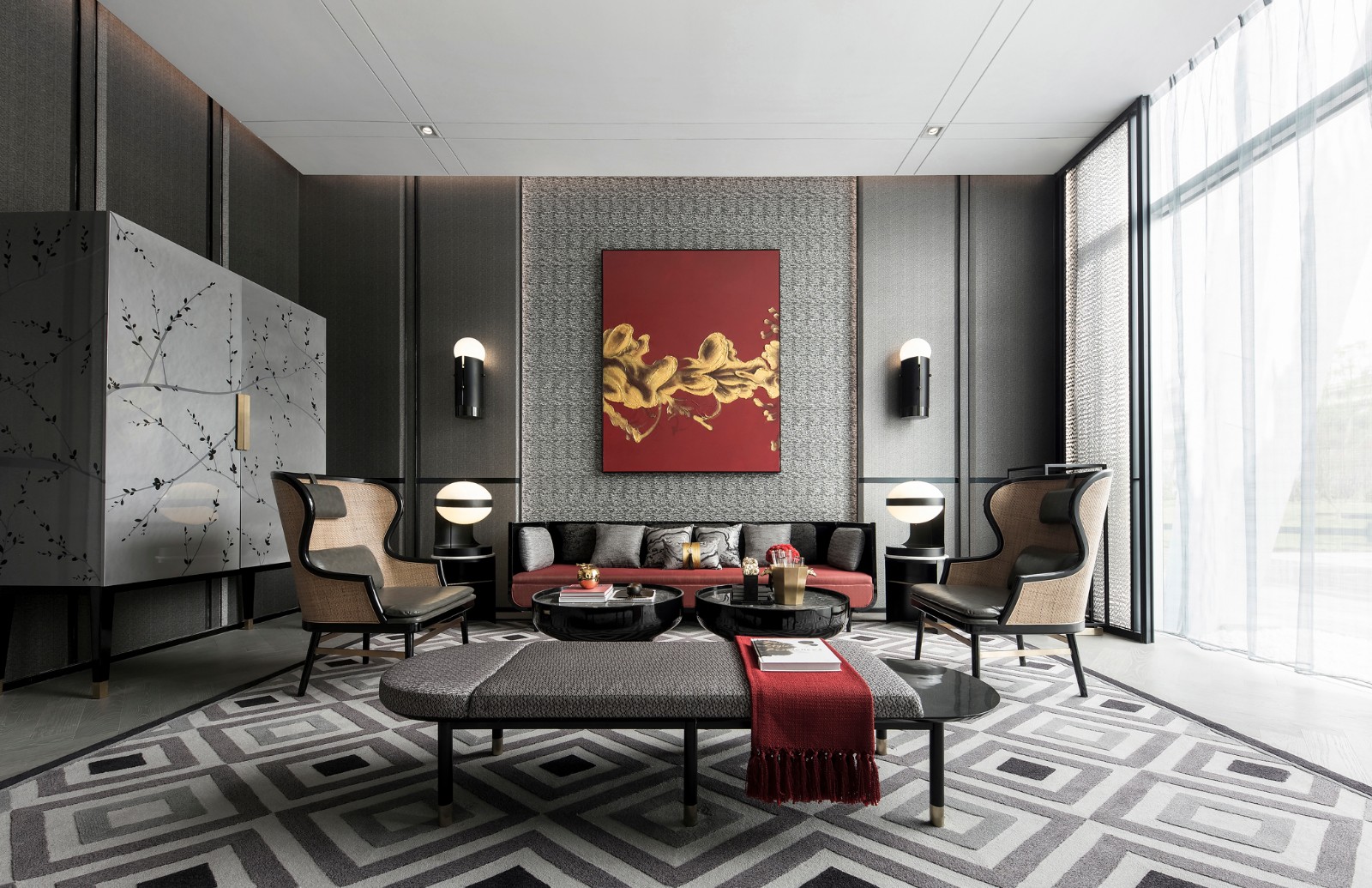
It’s important to decide right at the start how traditional you want your space to look. This will influence key decisions such as color usage, furniture type, and decor.
Red is a must-include for your living room.
Use red as an accent color to make certain elements in the room stand out. For example, red cushions match well against a black sofa.
A more traditional approach would be to use red as the main color in the room. You could paint your walls red, use red furniture, and hang traditional red lanterns as decor from the ceiling.
Use furniture made out of dark-colored wood. Pick those with ornate designs on the legs and armrest.
If you prefer modern furniture, you can forgo the ornate designs, but choose furniture that uses wood as the main material. Depending on the overall color scheme of the room, you can choose either light or dark-colored wood. A good guide is to use the shade that contrasts with other colors in the room.
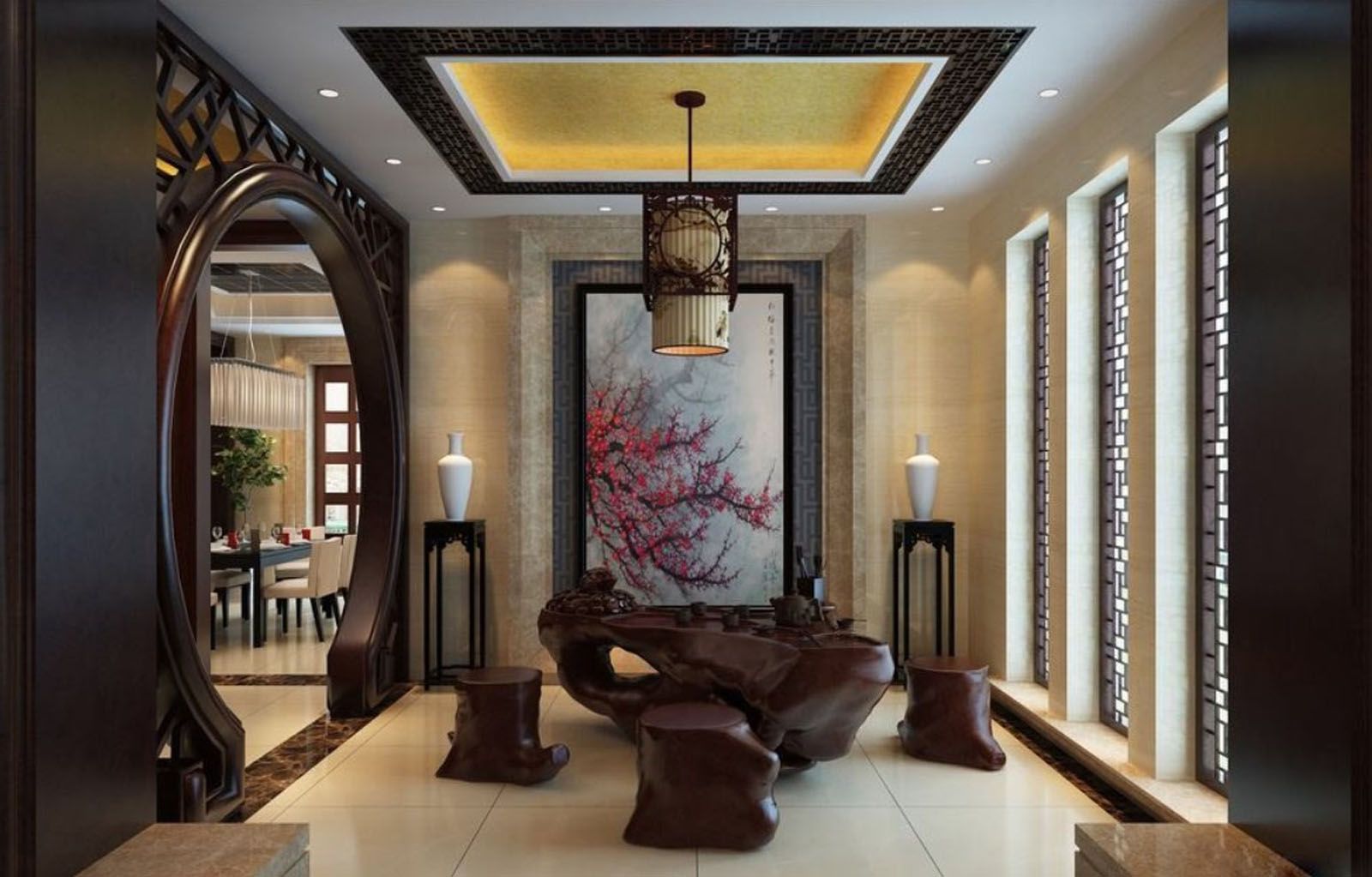
In today’s modern homes, minimalism is important. Choose decor that is impactful and looks stunning on their own. You could place a jade dragon in the middle of the living room as a visual centerpiece. Place a porcelain vase with flowers at a corner to complete the decor.
When choosing lights, pick those with designs that remind you of lanterns. You may choose to use them as decorative pieces too.
If your home is large enough, consider building a water feature. If not, a small fountain will do.
Open-floor concepts are very popular in modern homes, hence, use latticework partitions sparingly.
Kitchen
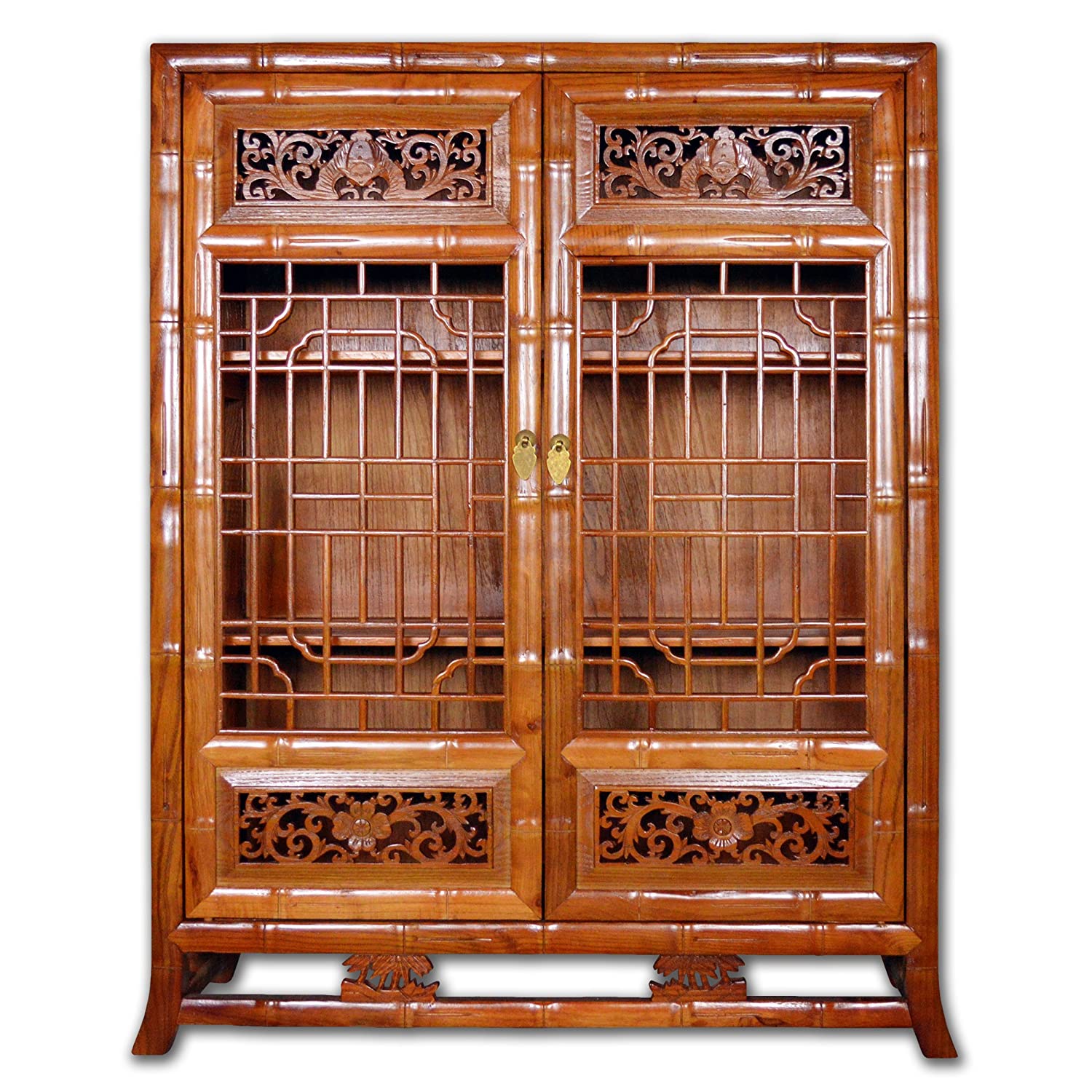
Open-concept kitchens are popular in newer homes. You can use latticework to separate the kitchen from other living spaces without disrupting the open floor plan.
Use wood finishes for the cabinets. Engrave the wood with simple ornate designs and top it off with metal handles. You can also use latticework on some sections of the cabinets to make the contents inside visible from the outside.
Place porcelain vases with a small bouquet on countertops as sole decorative pieces. Match them with wooden stools for a more traditional Chinese look.
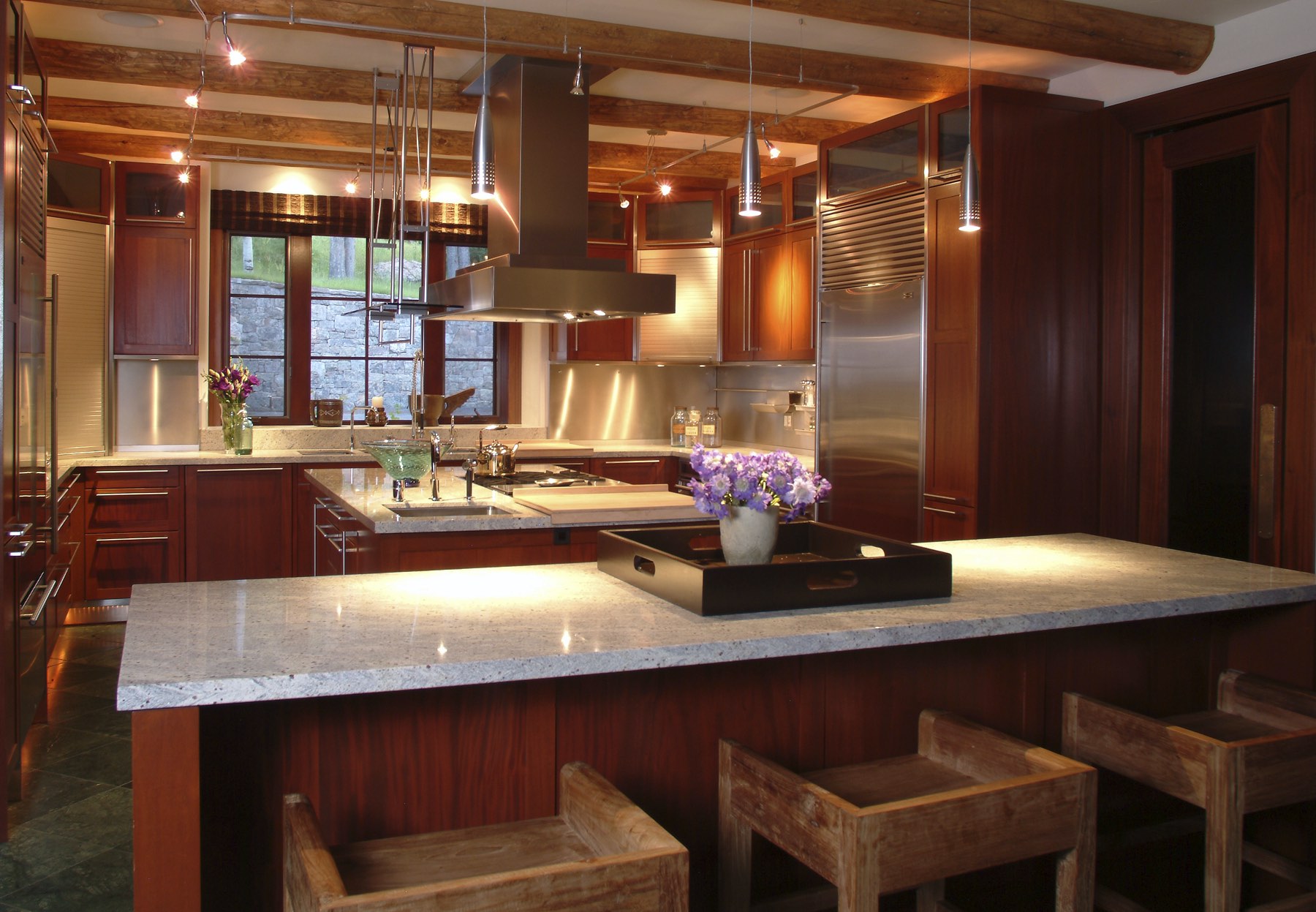
Alternatively, opt for a modern kitchen design with bold splashes of red color on elements such as the cabinets, countertops, or chairs.
Bedroom
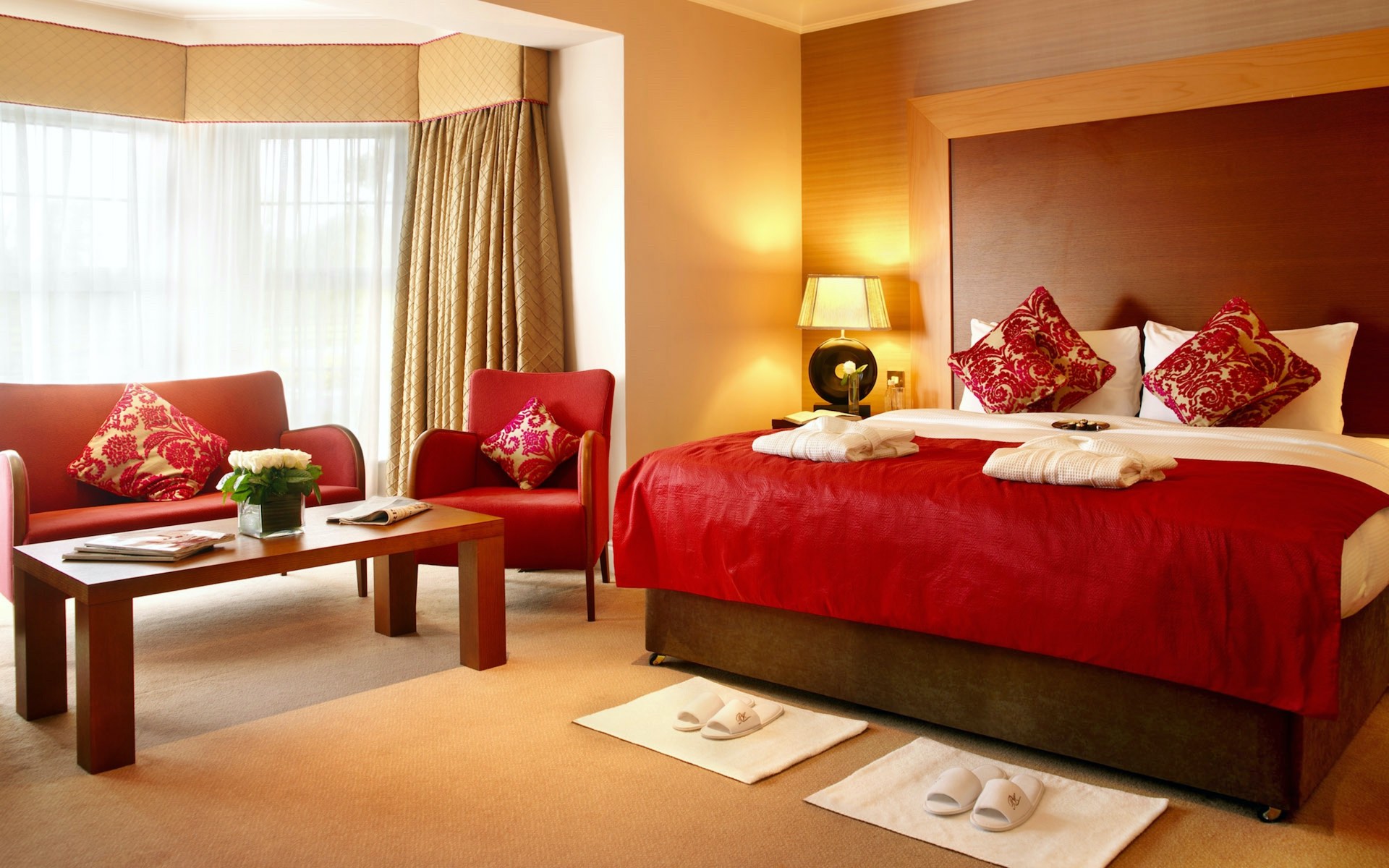
While red is a strong color, you could still add it to the bedroom. It works well when used to accent elements such as pillows on the bed.
For pillows, you can mix white with red ones. Choose red pillows that have gold embroidery. A good choice is a pillow embroidered with the Chinese word “囍” (which means double happiness) for couples or “福” (which means fortune).
Use latticework to partition the sleeping area away from other areas such as the closet. This gives your sleeping space privacy.
Use lantern-style lights with a soft glow to mimic the traditional lanterns used in the past. They work well as bedside lights to provide a relaxing atmosphere before you sleep.
For decor, you can mount a simple image of bamboo. A small jade statue also works well as decor for your dresser or bedside table. If the sound of water helps you to sleep, you could consider placing a small fountain in your room as the main decor instead.
Modern examples of Oriental Chinese
Oriental Chinese HDB/Condo living room
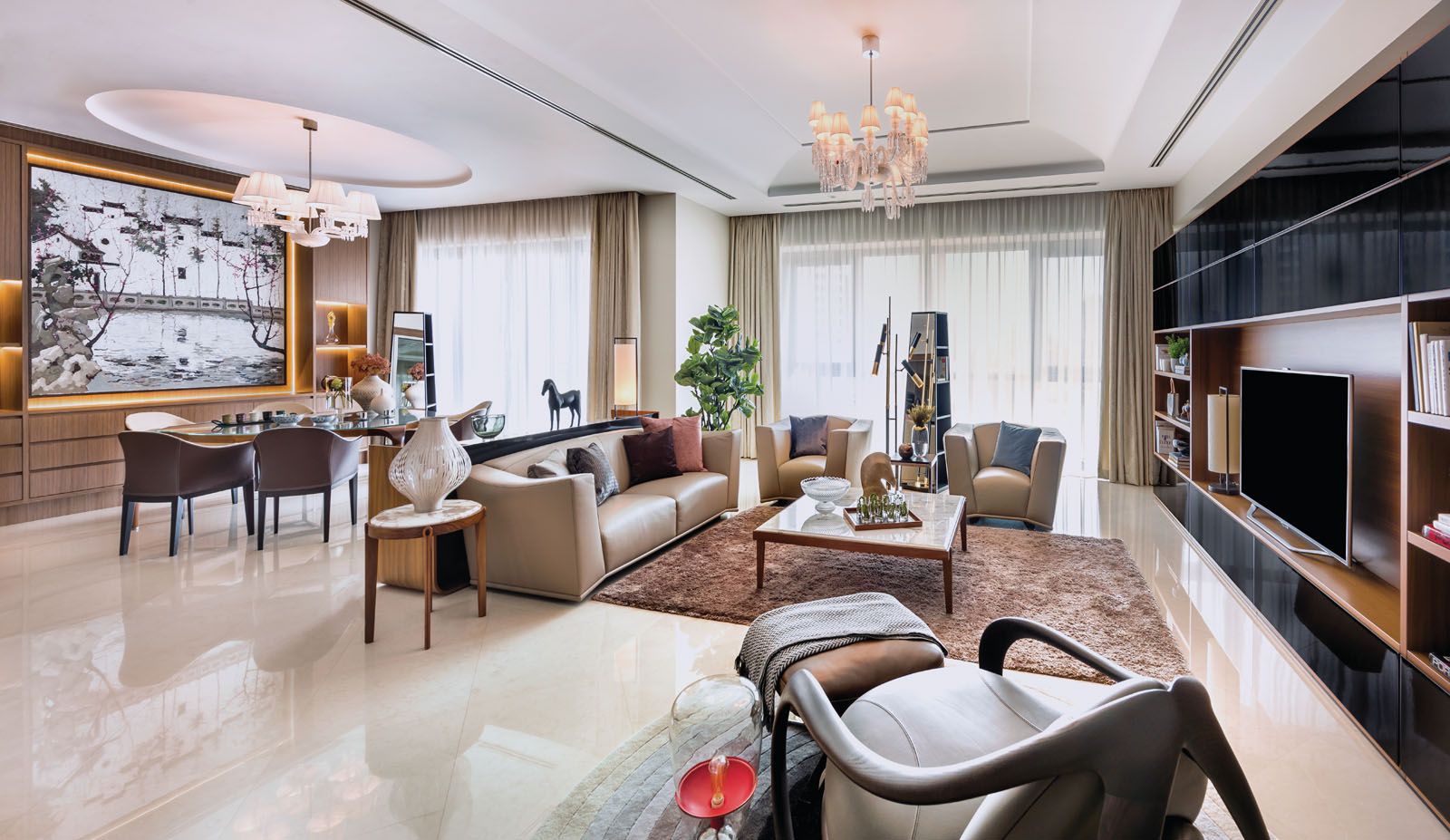
The modern aesthetics of Oriental style is derived from combining ancient art pieces with modern furniture.
A feature wall of a Chinese painting accentuated by built-in lighting brings out a luxurious interior with oriental elegance.
Oriental Chinese HDB/Condo kitchen
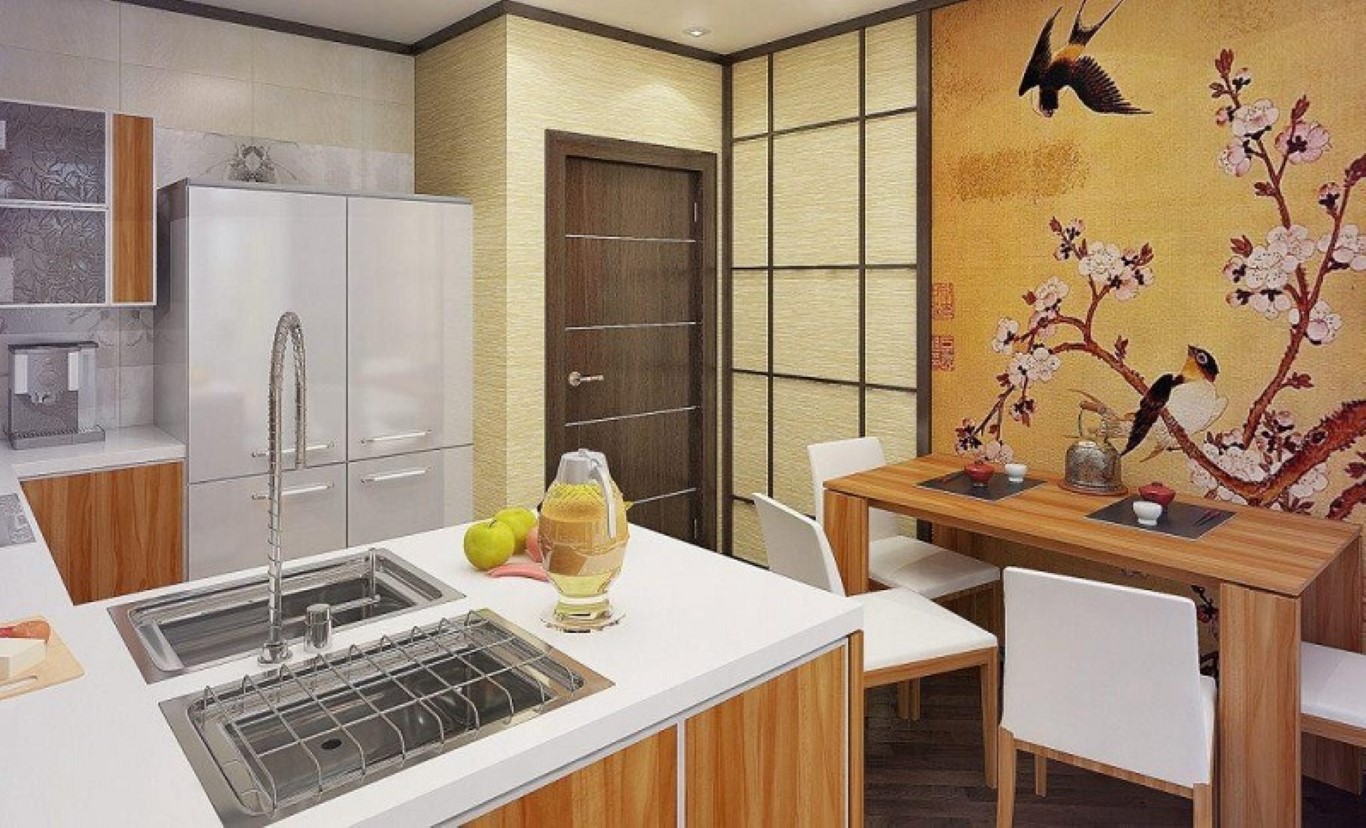
Decor with calligraphic symbols mixed with clean-lined elements can deliver a classic yet modernized Oriental interior.
A mural of birds and flowers, and a rattan wall panel adds vintage Oriental flavor in the kitchen. When combined with sleek modern furniture, we achieve an effortless modern Oriental vibe.
Oriental Chinese HDB/Condo bedroom
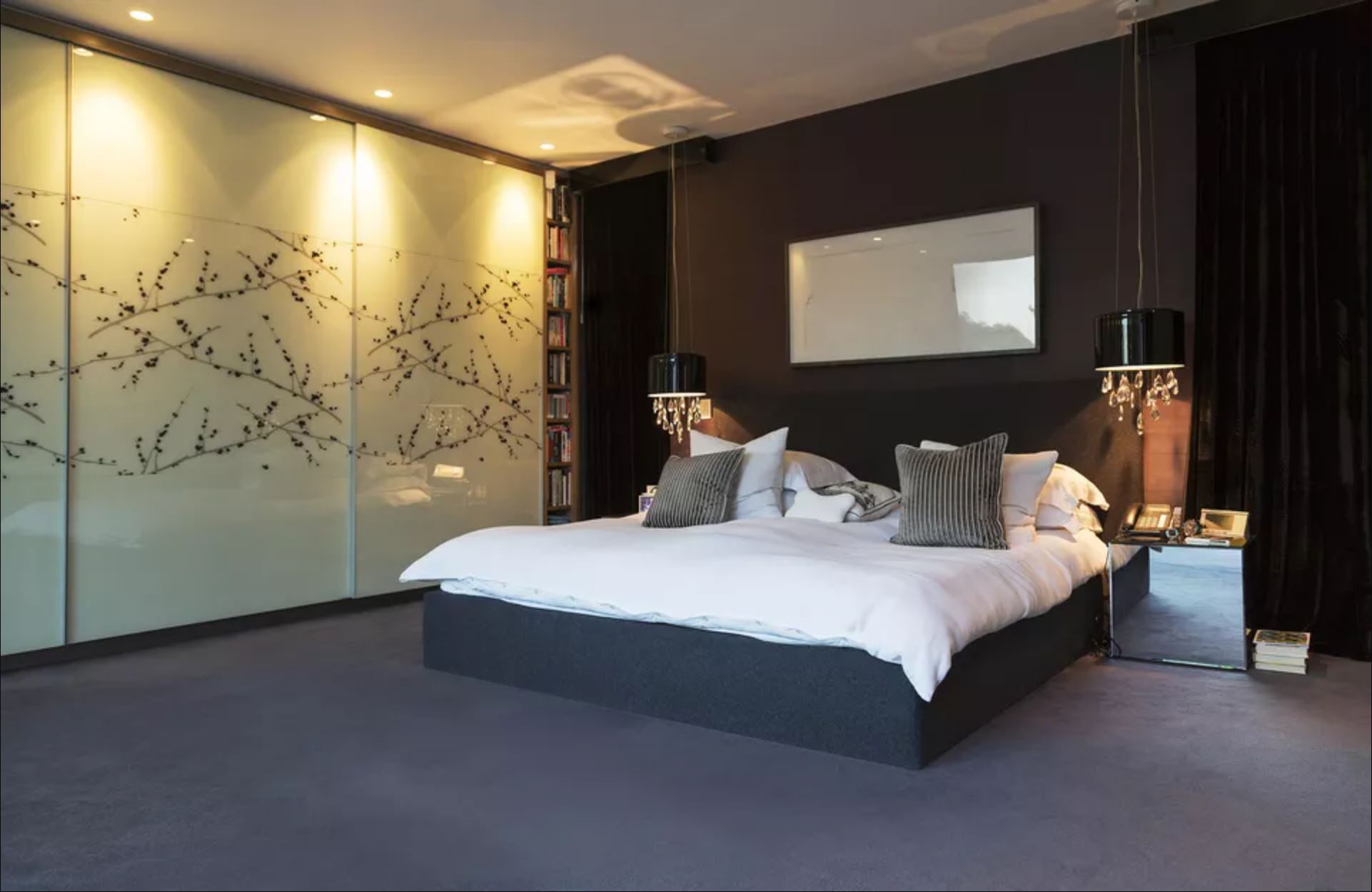
The gray monochromatic theme of the polished concrete floor, bed frame, and wall behind the bed present a modern aesthetic in the bedroom.
The combination of dark tones with pastel floral patterns on the wardrobe results in a refined Oriental look.
Oriental Chinese HDB/Condo bathroom
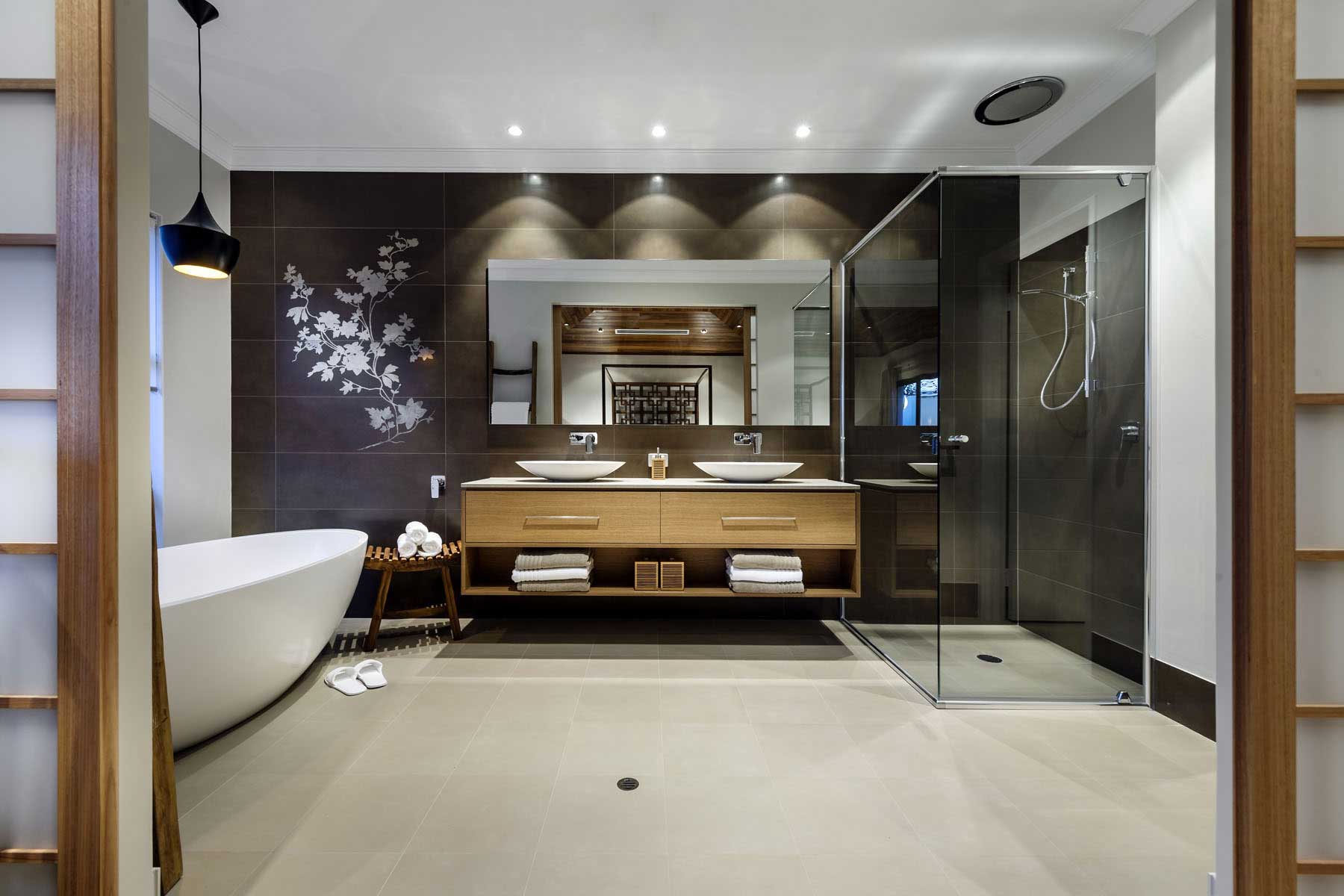
The open wooden basin-cabinet set against dark gray ceramic tiles represents a modern minimalist design approach.
The bathroom space achieves a bloom of oriental vibe with floral motifs on the accent wall. The patterns create an interesting contrast of traditional with modern while making the space functional and comfortable.
Oriental Chinese house living room
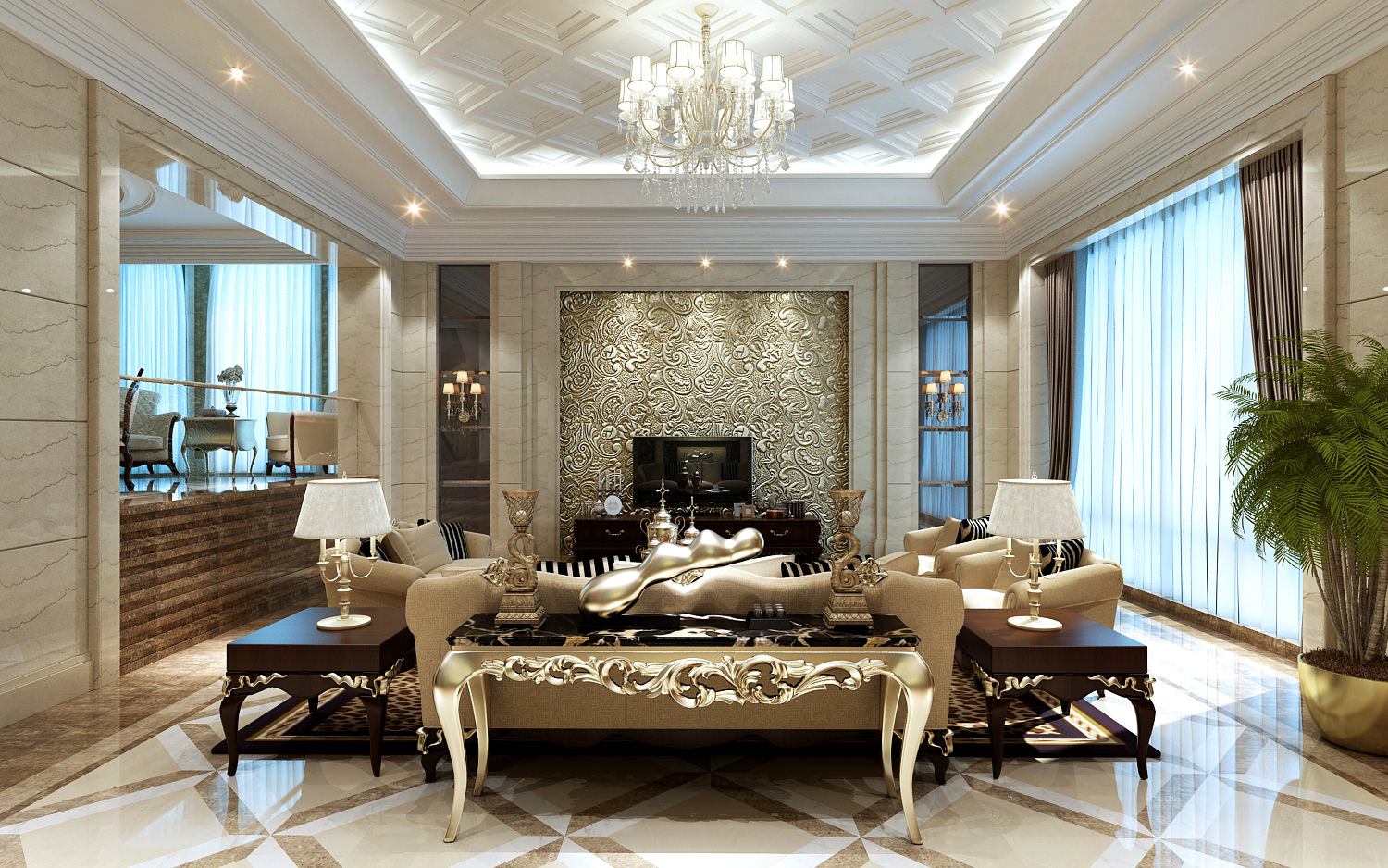
A modern Oriental influence is employed in this lounge via the display of polished marble walls, golden sculptures, and dark wood furniture. The coffered ceiling with an elegant crystal chandelier gives homeowners a sense of opulence and sentimentality.
Oriental Chinese house kitchen
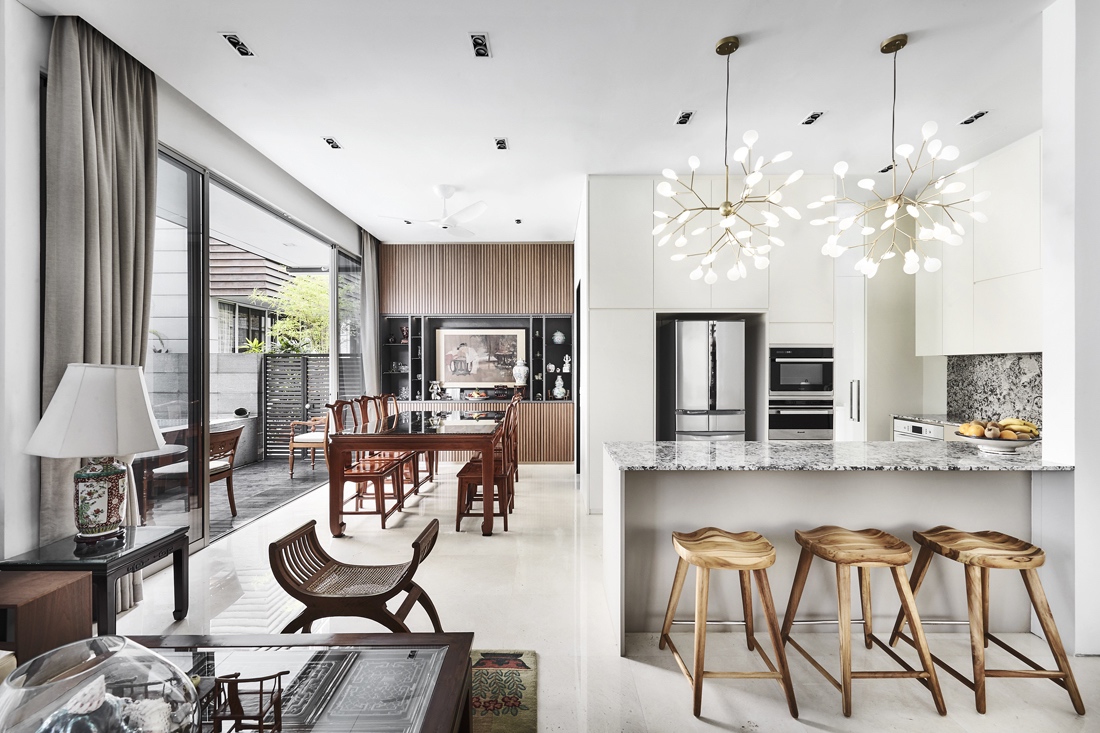
This modern Oriental home created an open-floor concept by uniting the kitchen space with the dining and living areas.
The all-white kitchen is contrasted with a granite countertop and backsplash. There's an assortment of wood types used on furniture. For instance, rosewood dining table, distressed natural-wood stool, and teak-wood armchair.
Oriental Chinese house bedroom
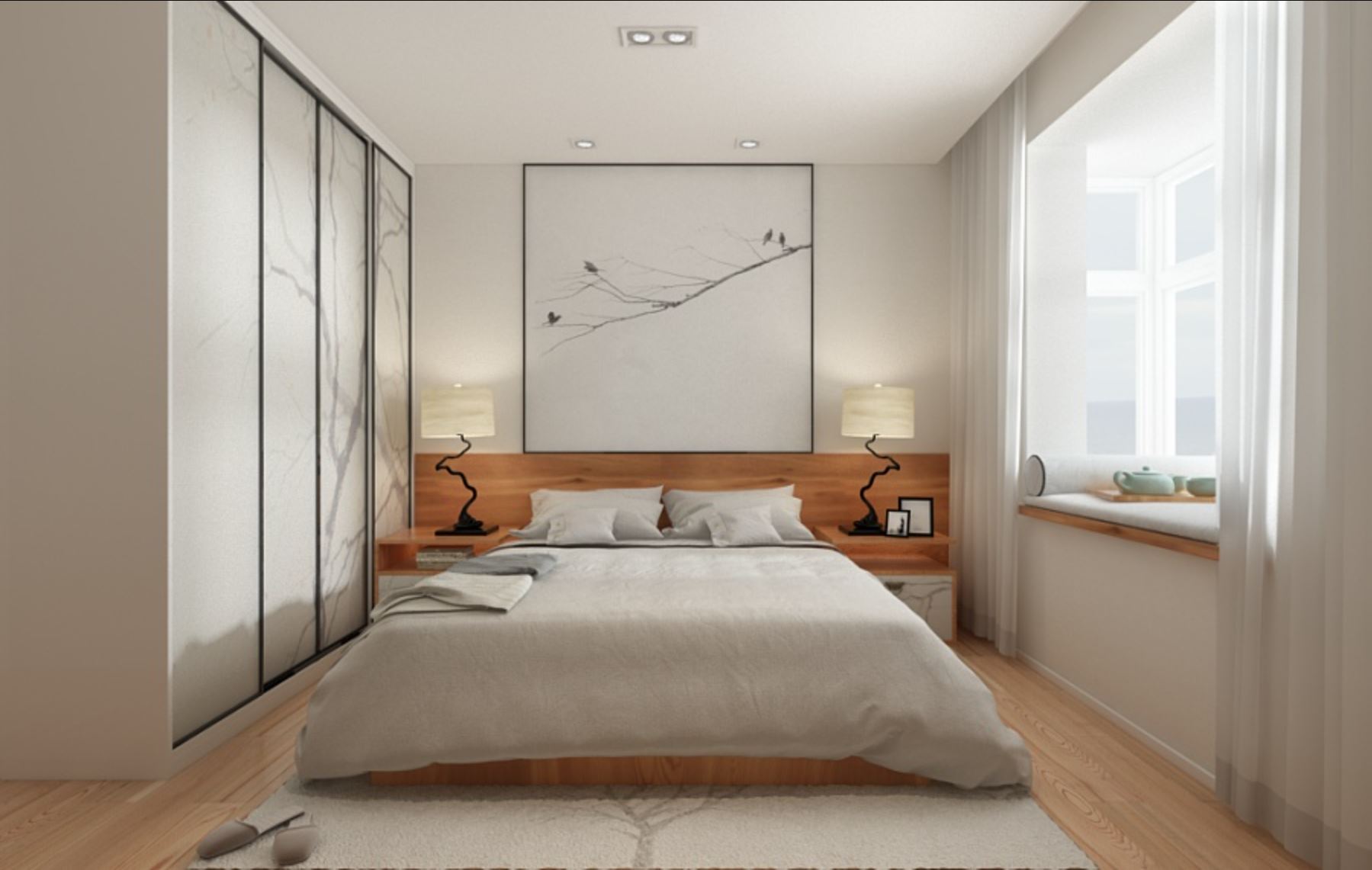
Simple wood furniture and clean forms are used in this bedroom to create a minimalist space. Instead of colorful flowery artwork, fine black strokes of leaves and branches are used.
Sculpture-inspired table lamps on the bedsides are used to create visual weights among the neutral elements in the bedroom.
Oriental Chinese house bathroom
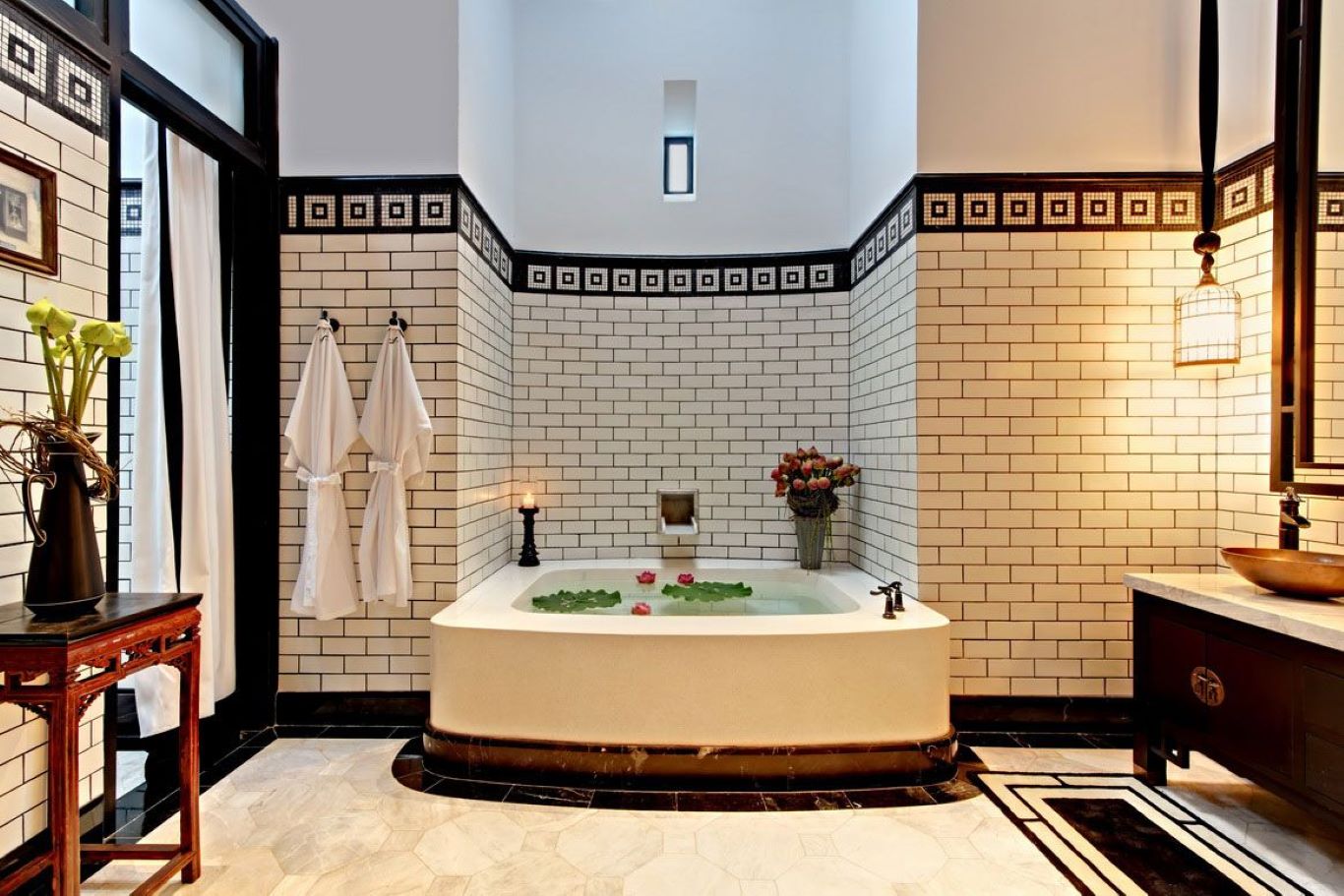
This bathroom largely features symmetrical-geometric wall tiles as an Oriental accent. The white marble flooring softens the elaborated walls. The wooden furniture pieces complement the overall space and create a warm and welcoming ambience.
Fusing Oriental Chinese with other styles
Oriental Chinese styles today exist on a broad spectrum between traditional and modern.
While traditional Oriental Chinese designs look like homes of the past, modern adaptations of the style have blurred lines between modern Oriental Chinese and fusions of Oriental Chinese with other modern styles.
Today, most people adopt modern adaptations of the Oriental Chinese style.
Let us share how you can incorporate Oriental Chinese elements with other modern styles like Scandinavian and Contemporary.
Oriental Chinese with Scandinavian
Scandinavian is a style that emphasizes minimalism, clean lines, and neutral colors. Scandinavian philosophy also encourages the inclusion of nature into the home through plants.
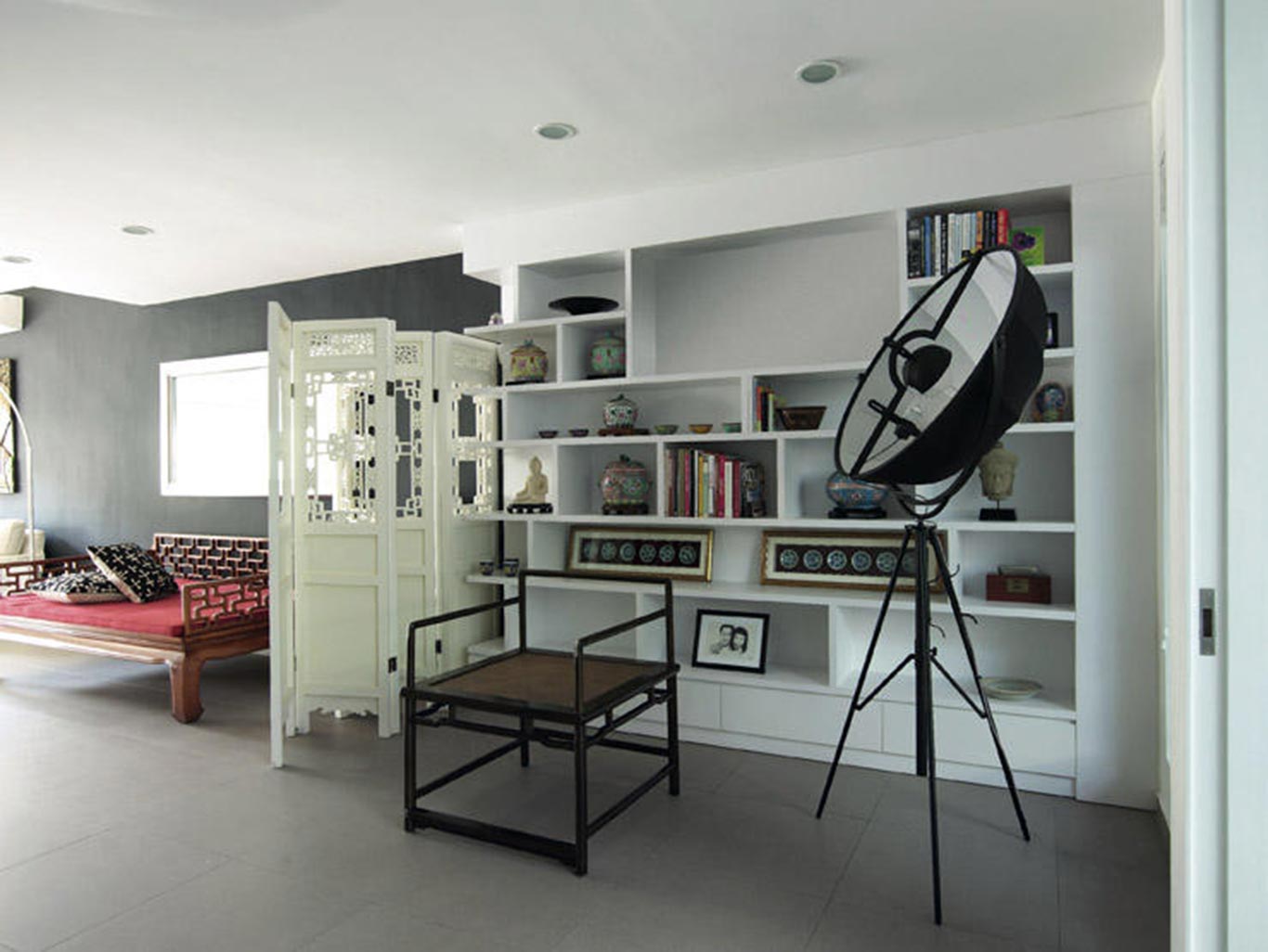
When adding Oriental Chinese elements to Scandinavian, focus on nature. Artwork or wallpapers of flowers, plants, or birds match well with the nature theme. Bamboo is a material that also falls in line with this theme.
Another distinct aspect of Scandinavian design is the open floor plan. When fusing with Oriental Chinese, a balance can be achieved with latticework wall partitions. The partitions separate spaces with different purposes, yet retain the feel of the open floor plan because latticework allows plenty of light through.
Minimalism in Scandinavian styles means clutter-free spaces with purposefully placed decor and accessories. Oriental Chinese decor works well because much of it is related to nature. For example, a porcelain vase with flowers or a water fountain adds natural elements to the home.
This fusion will give your home a unique East-meets-West look that is well suited for today’s globalized world.
Check out our Definitive guide to Scandinavian interior design style.
Oriental Chinese with Contemporary
Contemporary styles are continuously evolving to keep up with current trends. What was considered Contemporary a few years ago may not be today.
In today’s Contemporary design, form and function have equal priority. Thus, you’ll see furniture with curved lines, and function as storage spaces too. Oriental Chinese furniture pairs well with Contemporary furniture because it also features curved lines and intricate designs carved from wood.
Similar to Scandinavian styles, Contemporary homes have open floor plans. The same reasons why latticework can be used in Scandinavian styles also work for Contemporary styles. For Contemporary styles, the design of the latticework can be abstract and feature interesting repeating patterns instead of traditional latticework.
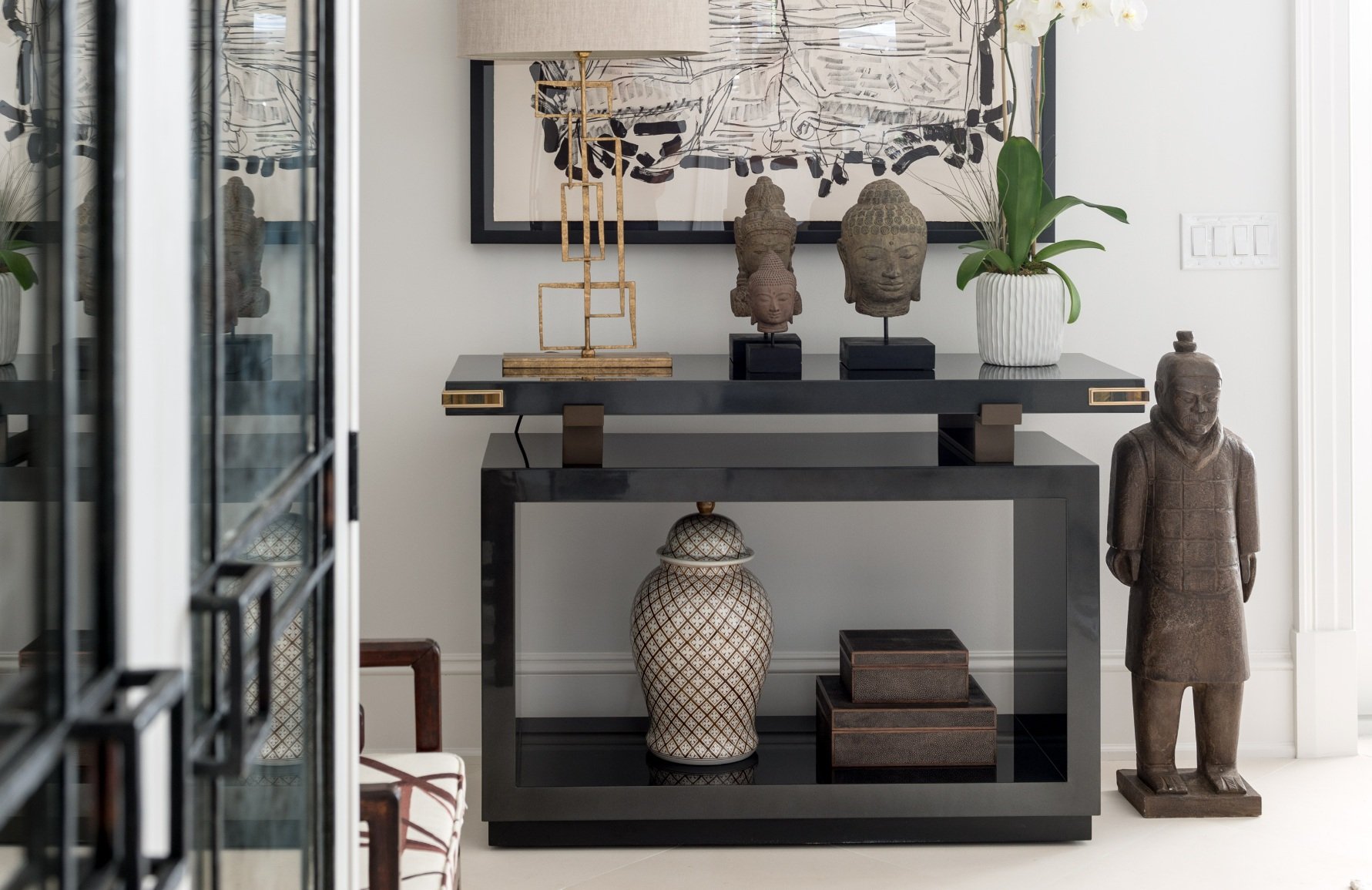
In Contemporary styles, decor and accessories serve a secondary function as conversation starters among guests. Oriental Chinese decor such as jade dragon statues or lacquerware have long histories that trigger conversations about their origin.
This combination of styles gives the homeowner the flexibility to keep up with design trends while retaining some of the heritage of Oriental Chinese designs.
Check out our Definitive guide to Contemporary interior design style.
Summary
The Oriental Chinese style has deep roots in history. It dates back thousands of years, yet it endures in modern homes today.
The Oriental Chinese style has evolved to incorporate many modern elements from other styles, while retaining its essence through distinct characteristics.
Excited to apply this style to your own home? Get in touch with our interior design consultants to know more about the latest Oriental Chinese interior design ideas. We’d love to share.
If you’d like to know more about this style, check out our portfolio stories on how people are applying it to their own homes.
Check out the rest of our Definitive Guides here:
Good luck with your renovation project.


